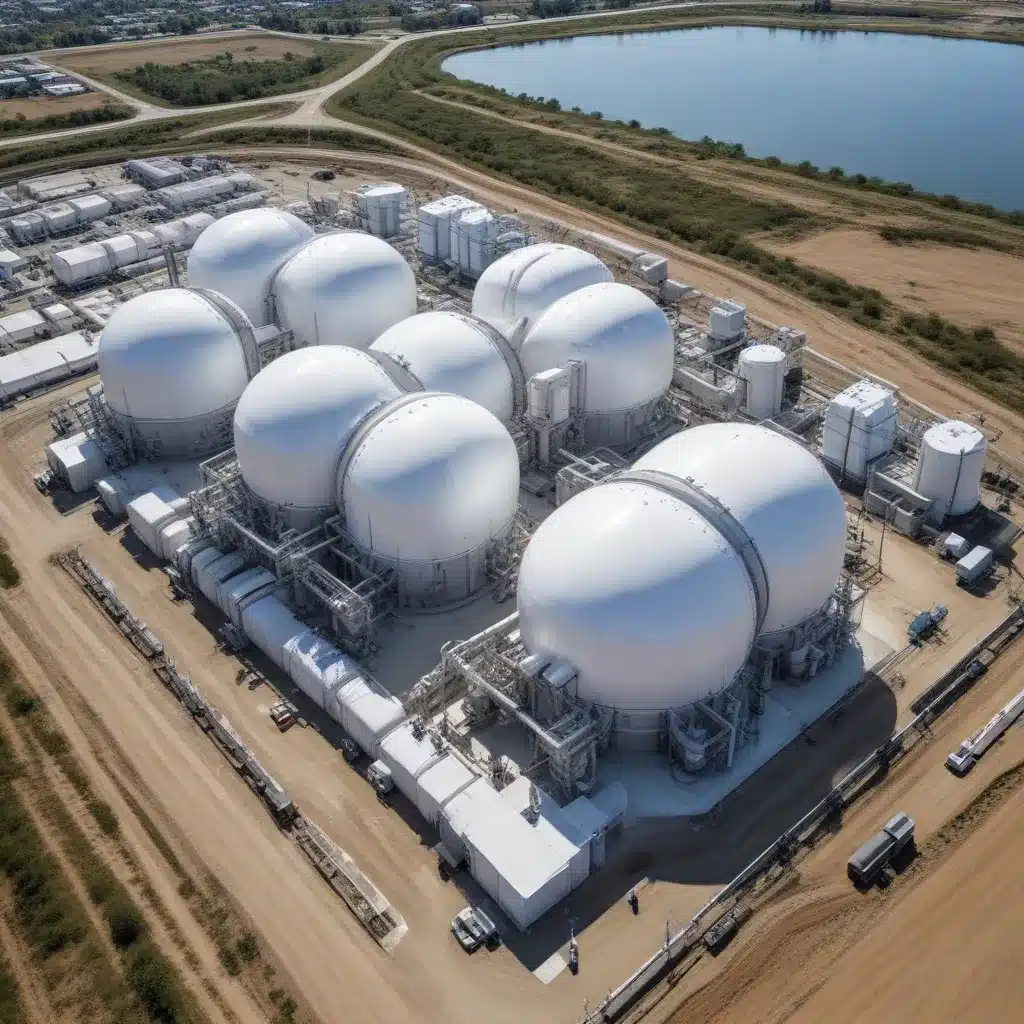
Transparency Concerns and Uncertain Climate Impacts Plague $7 Billion Initiative
A year ago, the U.S. Department of Energy (DOE) announced an ambitious plan to build large-scale clean hydrogen hubs across the country, committing $7 billion in federal grants to help attract tens of billions more in private investment. These hubs aim to scale up the production, storage, and transport of low- and zero-carbon hydrogen, seen by some experts as a way to replace fossil fuels in hard-to-decarbonize industries like steelmaking and aviation.
However, 12 months later, progress on these “clean hydrogen hubs” has advanced little, and they remain shrouded in uncertainty. Environmental groups, community advocates, and energy experts have grown concerned that the projects are off track, and they are increasingly dismayed by the lack of transparency from the DOE and the hub projects themselves.
Slow Progress and Unanswered Questions
The DOE’s Office of Clean Energy Demonstrations (OCED), the agency responsible for the H2Hubs program, must ensure the hubs are hitting key technical, financial, and community-benefit milestones to earn their phased federal funding disbursements. But this process has been slow and opaque.
“We’re still struggling at this point to understand what’s really going on with the hubs,” said Morgan Rote, director of U.S. climate at the Environmental Defense Fund (EDF). “I don’t think DOE is sitting on a whole wealth of information they’re not sharing, but that makes it even more challenging – and it’s no wonder communities feel like they don’t have information, if the DOE doesn’t have information.”
Kelly Cummins, OCED’s acting director, acknowledged these frustrations, noting that the agency is “just at the start of this learning process” as the hubs move through their initial planning grants. To date, only three hubs have received first-phase funding of around $30 million each, while the rest are still negotiating final approval.
“The tension here is that we’re still in early days,” Cummins said. “We’ve been working to engage communities and special interest groups. But we’re just at the start of this learning process.”
Uncertain Economics and Climate Impacts
Adding to the uncertainty are the unresolved economics and environmental impacts of the hubs. Less than 1% of global hydrogen production today is low-carbon, with the vast majority derived from fossil gas. The two main clean hydrogen production methods – “blue hydrogen” from fossil gas with carbon capture, and “green hydrogen” from water electrolysis powered by renewable electricity – remain far more expensive than dirty hydrogen.
The hubs need about $40 billion in private investment to match the DOE’s $7 billion, a tough sell given the uncertain economics. What’s more, the rules for a crucial clean hydrogen tax credit created by the Inflation Reduction Act have yet to be finalized, leaving key details in limbo.
Additionally, the DOE has touted the hubs’ potential to reduce carbon emissions by 25 million metric tons per year, but has not yet published projections of their full lifecycle emissions. This has drawn criticism from lawmakers who warn that poorly designed hubs could entirely negate any climate benefits.
“Scientists have warned that high levels of lifecycle emissions from hydrogen production could entirely cancel out any climate benefits from replacing fossil fuels with hydrogen,” wrote U.S. Representatives Jamie Raskin and Donald S. Beyer Jr. in a May letter to the DOE.
Transparency and Community Engagement Concerns
Beyond the economic and environmental uncertainties, environmental and community groups have raised alarms over the lack of transparency and meaningful community engagement from the hubs and the DOE.
The Natural Resources Defense Council reported in May that “environmental justice advocates and frontline communities have largely been kept in the dark on key details and basic information about many of these projects.” This sentiment is echoed by groups like the Environmental Defense Fund and the Ohio River Valley Institute, which have struggled to obtain specifics on hub plans and funding.
In California, the ARCHES hub even requires meeting participants to sign non-disclosure agreements, barring them from sharing information – a practice that community groups say they cannot accept.
“That’s something we can’t do,” said Theo Caretto of the environmental justice group Communities for a Better Environment, “since it would bar community groups from sharing information with their constituents.”
The DOE has responded by adding new requirements for hubs, such as creating public data portals and developing community advisory structures. But Cummins acknowledged the challenge of balancing transparency with the realities of an early-stage process.
“There is this dichotomy, this tension, between the project development deadlines and long-term robust engagement processes that will be needed to meet these community benefits plans obligations and gain community trust,” said Mona Dajani, an energy infrastructure lawyer involved with the HyVelocity hub in Texas.
An Uncertain Future for Clean Hydrogen Hubs
As the clean hydrogen hubs navigate these transparency, economic, and environmental hurdles, the broader enthusiasm for hydrogen’s role in decarbonization has started to temper. Major project announcements have been delayed or put on hold, leading analysts to question whether ambitious government production targets can be achieved.
This retrenchment poses a threat to the hubs, which must convince companies and investors to commit the tens of billions required to scale up clean hydrogen. The Appalachian ARCH2 hub, for example, has already seen some major partners, like TC Energy and Chemours, withdraw their planned projects.
“The various hydrogen hubs and their individual projects are much more tenuous than many people imagine,” said Sean O’Leary, a senior researcher at the Ohio River Valley Institute. “These projects are still heavily dependent on private markets to come up with the funds.”
With so many unanswered questions, the future of the DOE’s $7 billion clean hydrogen hub initiative remains uncertain. As the agency and hub participants work to address transparency, community engagement, and technical challenges, they must also convince skeptical investors, policymakers, and the public that these hubs can deliver on their promised climate and economic benefits.

